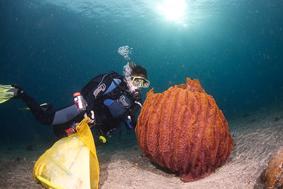
Population connectivity is a topic of major interest in marine biology with implications for ecology, evolutionary biology, biogeography, conservation and the management of exploited resources. In general, species with a longer pelagic larval duration, will disperse greater distances. Realised dispersal, however, depends on a number of factors including larval life history traits, behaviour and oceanographic conditions, particularly current patterns.
Vertical migration behavior can have an important impact on horizontal dispersal, by regulating the time spent by larvae within particular layers of vertically sheared flows. Temporal variation in current patterns is in turn strongly affected by winds, density stratification of the water column and instabilities caused by interaction of currents with bottom topography.
The overall objective of the present research proposal will address (in part) this conceptual framework by examining questions related to species performance (reproductive output) population (genetic) structure, and larval dispersal over wide biogeographical scales by using a widely distributed and conspicuous coral reef giant barrel sponge (Xestospongia testudinaria) as a model. Giant barrel sponges are the largest and possibly longest living of sponges and are also important spatial competitors in reef environments and contribute to reef heterogeneity.